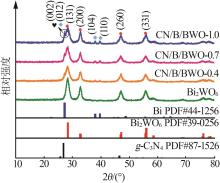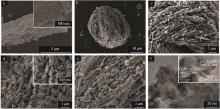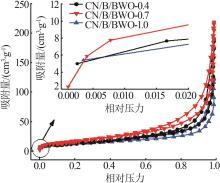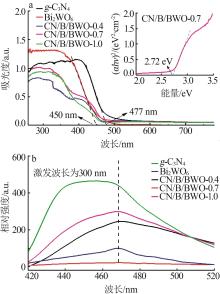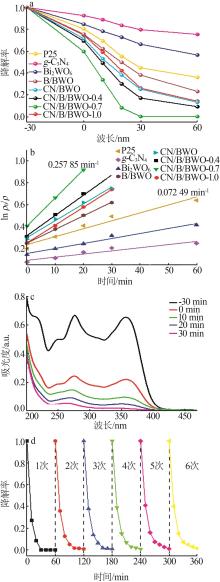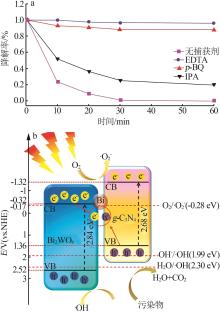| 1 |
GUO Qiyao, HUANG Yunfang, XU Hui, et al. The effects of solvent on photocatalytic properties of Bi2WO6/TiO2 heterojunction under visible light irradiation[J]. Solid State Sciences, 2018, 78: 95-106.
|
| 2 |
CHEN Lang, HE Jie, LIU Ying, et al. Recent advances in bismuth-containing photocatalysts with heterojunctions[J]. Chinese Journal of Catalysis, 2016, 37(6):780-791.
|
| 3 |
LIANG Fang, SHI Fanian. Progress in synthesis and degradation of organic pollutants by bismuth-based bimetallic photocatalysts[J]. Inorganic Chemicals Industry, 2022, 54(4):61-68.
|
| 4 |
WANG Fengliang, WANG Yingfei, FENG Yiping, et al. Novel ternary photocatalyst of single atom-dispersed silver and carbon quantum dots co-loaded with ultrathin g-C3N4 for broad spectrum photocatalytic degradation of naproxen[J]. Applied Catalysis B:Environmental, 2018, 221: 510-520.
|
| 5 |
WANG Yong, TAN Guoqiang, DANG Mingyue, et al. Study on surface modification of g-C3N4 photocatalyst[J]. Journal of Alloys and Compounds, 2022, 908.Doi:10.1016/j.jallcom.2022.164507 .
doi: 10.1016/j.jallcom.2022.164507
|
| 6 |
LIU Yifan, LI Mingliang, LUO Yan, et al. Preparation of 3D-C3N4/Bi2WO6 visible light catalyst and its degradation of tetracycline[J]. Environmental Science and Technology, 2020, 43(7):84-93.
|
| 7 |
HELEN SELVI M, VANGA P R, HARINEE S, et al. Synthesis of bulk g-C3N4/Bi2WO6 nanocomposite for effective photocatalytic reaction and for antimicrobial activity by hydrothermal method[J]. Research on Chemical Intermediates, 2020, 46(2):1165-1181.
|
| 8 |
WAGEH S, AL-GHAMDI A A, JAFER R, et al. A new heterojunction in photocatalysis:S-scheme heterojunction[J]. Chinese Journal of Catalysis, 2021, 42(5):667-669.
|
| 9 |
LOW J, JIANG Chuanjia, CHENG Bei, et al. A review of direct Z-scheme photocatalysts[J]. Small Methods, 2017, 1(5).Doi:10.1002/smtd.201700080 .
doi: 10.1002/smtd.201700080
|
| 10 |
XU Quanlong, ZHANG Liuyang, YU Jiaguo, et al. Direct Z-scheme photocatalysts:Principles,synthesis,and applications[J]. Materials Today, 2018, 21(10):1042-1063.
|
| 11 |
ZHANG Li, YANG Chao, LV Kangle, et al. SPR effect of bismuth enhanced visible photoreactivity of Bi2WO6 for NO abatement[J]. Chinese Journal of Catalysis, 2019, 40(5):755-764.
|
| 12 |
CUI Zhankui, ZENG Dawen, TANG Tengteng, et al. Processing-structure-property relationships of Bi2WO6 nanostructures as visible-light-driven photocatalyst[J]. Journal of Hazardous Materials, 2010, 183(1/2/3):211-217.
|
| 13 |
ARIF M, ZHANG Min, MAO Yue, et al. Oxygen vacancy mediated single unit cell Bi2WO6 by Ti doping for ameliorated photocatalytic performance[J]. Journal of Colloid and Interface Science, 2020, 581: 276-291.
|
| 14 |
HUANG Yongkui, KANG Shifei, YANG Yun, et al. Facile synthesis of Bi/Bi2WO6 nanocomposite with enhanced photocatalytic activity under visible light[J]. Applied Catalysis B:Environmental, 2016, 196: 89-99.
|
| 15 |
ZHAO Xinxin, YANG Hua, CUI Ziming, et al. Synergistically enhanced photocatalytic performance of Bi4Ti3O12 nanosheets by Au and Ag nanoparticles[J]. Journal of Materials Science:Materials in Electronics, 2019, 30(14):13785-13796.
|
| 16 |
JIA Jiankui, ZHANG Xiaorui, JIANG Caiyun, et al. Visible-light-driven nitrogen-doped carbon quantum dots decorated g-C3N4/Bi2WO6 Z-scheme composite with enhanced photocatalytic activity and mechanism insight[J]. Journal of Alloys and Compounds, 2020, 835.Doi:10.1016/j.jallcom.2020.155180 .
doi: 10.1016/j.jallcom.2020.155180
|
| 17 |
YU Weilai, ZHANG Shuai, CHEN Junxiang, et al. Biomimetic Z-scheme photocatalyst with a tandem solid-state electron flow catalyzing H2 evolution[J]. Journal of Materials Chemistry A, 2018, 6(32):15668-15674.
|
| 18 |
WU Qiangshun, CHAI Siqi, YANG Hanpei, et al. Enhancing visible-light driven photocatalytic performance of BiOBr by self-doping and in situ deposition strategy:A synergistic effect between Bi5+ and metallic Bi[J]. Separation and Purification Technology, 2020, 253.Doi:10.1016/j.seppur.2020.117388 .
doi: 10.1016/j.seppur.2020.117388
|
 ),LI Mingchun(
),LI Mingchun( ),GUO Yintong
),GUO Yintong
